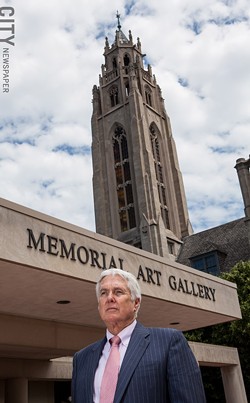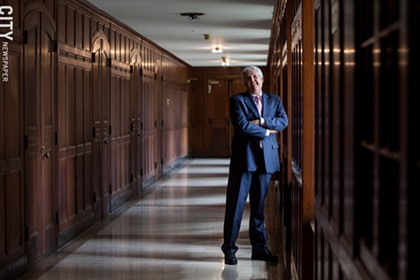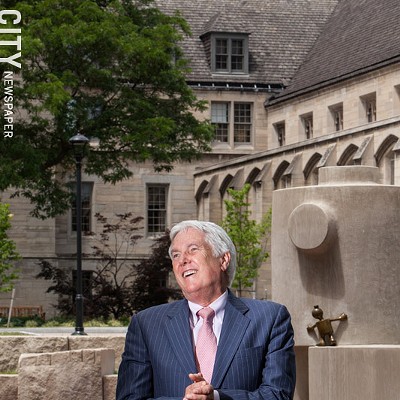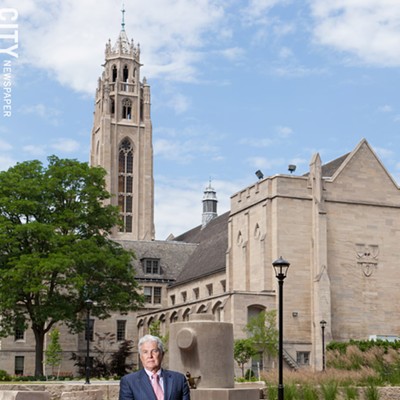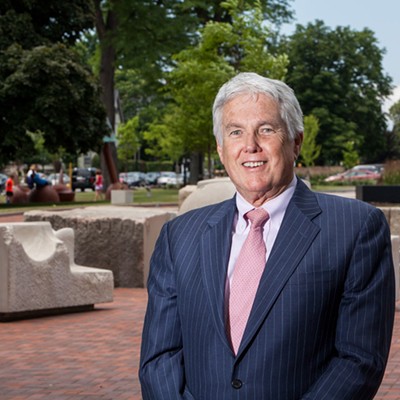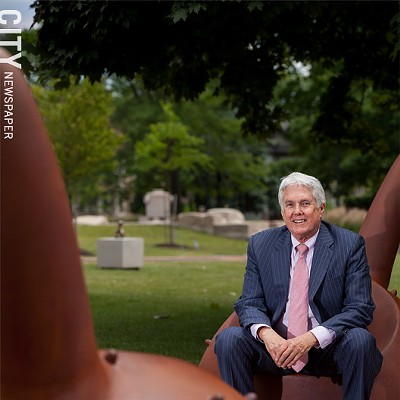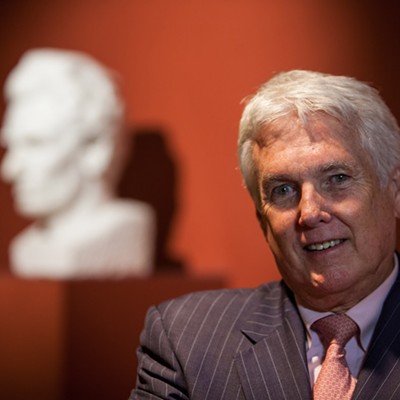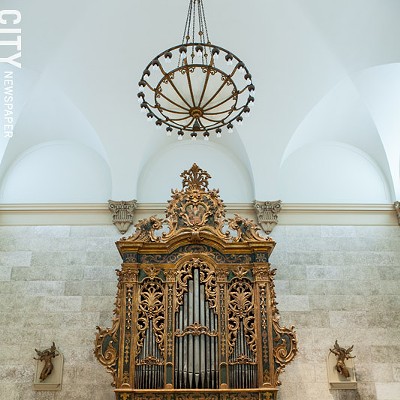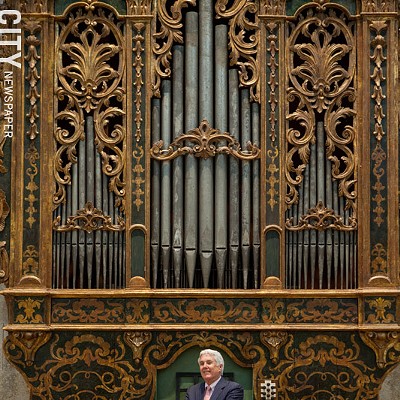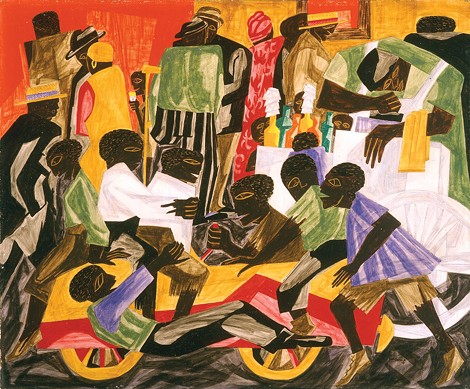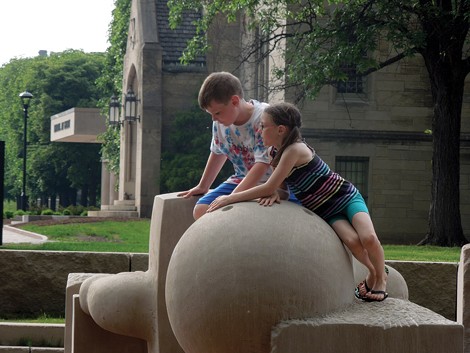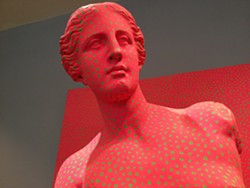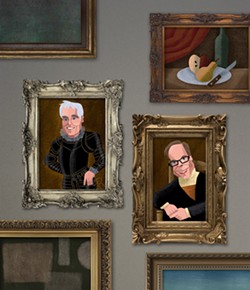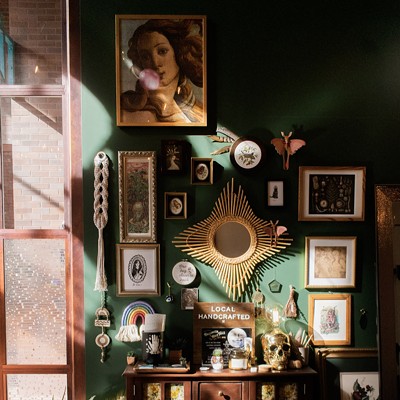[
{
"name": "500x250 Ad",
"insertPoint": "5",
"component": "15667920",
"parentWrapperClass": "",
"requiredCountToDisplay": "1"
}
]
In mid-July, Jonathan Binstock was named the next director of the University of Rochester's Memorial Art Gallery, following Grant Holcomb's 29-year tenure. Over the years, Holcomb accomplished much for the art museum, seeing it through expanded facilities and collections while arts funding took serious hits.
Now, during the first stages of the Memorial Art Gallery's second hundred years, Binstock will bring his own navigational tools to the table, and is charged with meeting the challenges of funding and of engaging new audiences.
The MAG stands at a pivotal moment. As one director leaves and another arrives, Rochester is presented an opportunity to assess the current trajectory of the institution.
For 100 years, the Memorial Art Gallery has served as Rochester's art museum and gallery. The institution safeguards a wide array of artifacts that help us reflect on crystallized moments in human history, and serves as one of the places that the public can interact with the art of regional, national, and international working artists.
Holcomb says he believes that museums should "energize a community," but balancing crowd-pleasing exhibitions with more challenging contemporary shows has always been difficult. In addition, he says that MAG's audience is a broad one, including school children, college students, and elder patrons, all with different tastes and needs.
"Part of the profile of the Memorial Art Gallery is that their collection is a teaching collection, because of the association with the university," says sculptor Albert Paley. "So there's a wide spectrum going from antique to contemporary work." MAG's current permanent collection includes about 12,437 objects, up from 8,816 at the end of 1985, the year Holcomb was hired.
Holcomb's MAG
Holcomb's nearly three-decade tenure was far longer than that of many museum directors, and because of that, a tight-knit, family-like environment was cultivated.
"We're really losing the magnetic north of the gallery," says Director of Exhibitions Marie Via, who has worked with Holcomb throughout his entire tenure. Few staff members at MAG have worked under any other director, she says, and because of this, some anticipate a major learning curve.
Holcomb mentored his staff "to an amazing level of accomplishment," says MAG Board of Managers Chair Jim Durfee. "The professional reputation of MAG's Education, Curatorial, and Exhibitions departments has grown substantially under his leadership," he says. Many of the staff who have worked with Holcomb for decades describe Holcomb as a boss who took unorthodox chances by offering opportunities for staff members to pursue their passions, while trusting their judgments. For example, when Holcomb arrived at MAG, Marie Via's was the curatorial departments secretary, with no museum curatorial experience, having only run a small art gallery in a student union in Illinois.
Holcomb commends Via for curating the "Extreme Materials" exhibit series, which he says pushed boundaries. When she originally pitched "Extreme Materials," Via says Holcomb was hesitant, because "this was just something that was just a little bit off his radar, but he allowed himself to be convinced. And it turned out to be one of the most successful shows that we had ever done."
Durfee says that Holcomb has had a strong knack for inspiring financial benefactors to recognize the unique value of art. In conversation with Holcomb, it becomes evident that he has great passion for the sensitive, resilient, and intrepid nature of humankind, and his enthusiasm for the tangible artifacts of our cultural history is infectious.
To Holcomb, financial sustainability depends not only upon a museum's ability to express the importance of art to the patrons, but also to collaborate with the other cultural institutions. "We're all in this together," he says.
Holcomb's interest in combining forces with other cultural entities in Rochester has had a cross-disciplinary focus. "Working with the Eastman School of Music, the only functioning 17th-century Italian organ in North America was installed a few years ago in the Gallery's Fountain Court, where concerts by Eastman students are performed weekly," says Peter Brown, current chair of the Art Committee, and chair of the search committee that hired Holcomb in 1985.
In addition, MAG has worked with collaboratively with Rochester Contemporary, Writers and Books, Rochester City Schools, and individual regional artists and writers. In 2001, Holcomb published "Voices in the Gallery," an anthology that features responses to MAG art by 40 writers. "Grant's message to all of us has always been: contact and connect," says poet and SUNY Brockport professor William Heyen. "He has made writers and artists feel needed, and even useful — no small task."
Expansion and Acquisition
When Holcomb arrived at MAG, he felt the former exhibition program was too rigid, and too regional. Though he says the gallery has continued to support regional artists to a significant extent, the staff was looking to include a wider range of art — historic to contemporary, regional to national, and if possible, international. Within Holcomb's first two years, MAG's temporary exhibition program broadened to reflect this desire.
Which is not to say that the MAG has turned its back on local and regional art. In fact, under Holcomb, the MAG made a commitment to the acquisition of craft art and has held craft-centric exhibitions — such as "Head, Heart and Hand: Elbert Hubbard and the Roycrofters" (1994), "White House Collection of American Crafts" exhibition (1995), and the upcoming Wayne Higby exhibition, which is on the exhibition schedule for 2015 — in order to reflect and emphasize the importance of historic and contemporary craft design in Western New York.
The Rochester area is rich with craft institutions and artists working in crafts. The region features the RIT School for American Craft, the historic Roycrofters' Guild as well as the current Roycroft Renaissance artisans, and some of the most important craft artists in the nation, and even the world, Holcomb says. Work by regional craft greats like Wendell Castle, Albert Paley, and Nancy Jurs are included in MAG's collection.
The classic Rochester-Finger Lakes juried exhibit was switched from an annual to every other year in order to make room for the invitational Biennial — the latest of which opened July 6 — which recognizes half a dozen regional artists in what is essentially six focused, simultaneous shows.
One of Holcomb's final challenges at the Memorial Art Gallery was deciding how to celebrate MAG's centennial year. There was a wealth of ideas, he says, but as always, a limited purse. A new wing dedicated to contemporary craft, art, and design exhibitions was considered, but it was deemed unsustainable, Holcomb says. "We talked about a new education wing, on the north side," he says. "We talked about a new entrance to the gallery, closer to the 1913 building. At the same time, we were developing an idea for the Centennial Sculpture Park."
In the end, it was decided that MAG would extend the museum beyond its walls by taking down the wrought-iron fence that ringed the campus — a significant decision which has really transformed the campus into a well-used urban park — and would commission three or four artists for major outdoor sculptural works. Holcomb also sought the support of sister arts organizations, including the commissioning of a major work by composer Jeff Tyzik, based upon pieces chosen by Tyzik from the museum's collection, and performed by the Rochester Philharmonic Orchestra.
Major sculptures commissioned for the Centennial Sculpture Garden include the whimsical seating and lighting combination, "Unicorn Family" by Wendell Castle, the prismatic "Soliloquy" sculpture by Albert Paley, New York City-based artist Jackie Ferrara's "Marking Crossways," and the massive limestone and bronze "Creation Myth" sculptural installation and sprawling amphitheater by New York-based sculptor Tom Otterness.
MAG was met with some strong opposition to the Otterness commission, given the ugly mark left on the artist's career when in 1977 he created "Shot Dog Film," in which he killed his dog. A smaller, quieter contingency of people simply didn't appreciate the grounds-dominating work based on aesthetic tastes.
"The first three to five months was not fun," Holcomb says. Staff members received concerned, angry, and at times threatening phone calls and messages. Petitions and calls to boycott the MAG were passed around, and about two dozen people dropped their membership.
"The controversy surrounding the Otterness work in the sculpture park was a difficult time for everyone associated with the MAG," says Theresa Mazzullo, who leads the MAG volunteer board. "Grant demonstrated his leadership by reaching out to and showing genuine empathy for the detractors, which resulted in a peaceful compromise."
"In the end, I think it made the institution stronger," Holcomb says. "It gave the board and the staff a challenging issue to deal with in a straightforward way, by talking with the community as best as you can."
Only connect
Holcomb says that his philosophy regarding the role of the museum hasn't really changed since he arrived at the MAG. "I really believed in the power of art, and I still do," he says. "Art matters. It matters to a 3 or 4 or 5-year-old kid who comes in, and his imagination is lit. We've seen it."
The beneficial impact of art is proved also through MAG's Art Education Department's "Meet Me at the MAG programming," conducted in collaboration with the Alzheimer's Association of Rochester. Through this program, individuals with Alzheimer's and Dementia and their care partners are encouraged to explore memories and feelings triggered by artworks while they are guided by gallery docents through the exhibits and permanent collections.
As many as seven Family Days — which focus on exploring various cultural heritages through performances, activities, and connections with MAG's collections — have been held annually, drawing thousands of visitors to the gallery. Diversity is also represented through acquisitions of work by Native American artists, African-American artists, Latino artists, and Vietnamese-American artists. Holcomb has strived to nurture a global, encyclopedic mission for the collection, reflecting the histories of the ancient and contemporary world, he says.
The gallery has held exhibitions of Latin American art in exhibitions like "TRANSactions: Contemporary Latino Art" (2007); Native American Art with "Changing Hands: Art Without Reservation 3" (2012); and African-American art in "Jacob Lawrence: Frederick Douglass and Harriet Tubman Series of Narrative Paintings" (1991) and Willie Cole's "Anxious Objects" (2007), the latter of which explored identity, race relations, consumerism, and the environment.
Enduring challenges
For arts institutions, finances and engagement of the community are locked in an infinite loop. When Holcomb arrived in Rochester in 1985, Kodak had more than 60,000 employees. By 2013, the local number was down to about 2,300 employees. Now, MAG doesn't have support from some major corporations who were annual supporters of the gallery in the past, Holcomb says.
Because of this downturn in corporate support, MAG is no longer able to consider high-profile, high-price-tag, and typically big-draw exhibitions, such as the shows MAG hosted featuring Maxfield Parrish (2000), Edgar Degas (2002), Augustus Saint-Gaudens (2004), Georgia O'Keeffe (2006), and American Impressionism (2008).
"We are unable to get the level of funding today that we received 10 to 20 years ago," Holcomb says. But that's the nature of the business world in Rochester, which has "moved from four to five major corporations to 20 or 30 smaller businesses that are doing well, but it's a different climate."
Holcomb says that the New York State Council on the Arts and Monroe County have both been steady supporters, and that increasing revenue through memberships and by renting space out for events such as weddings has been crucial. "We've touched this issue," he says, "but we haven't yet solved it."
Holcomb says that endowment, from which the gallery draws its acquisitions funding, has been critical. In the 1985-86 fiscal year, the gallery's total income was shy of $1.8 million, 13 percent of which came from endowments. The 2011-2013 reports show that MAG's total income was up to nearly $5.5 million, with 44 percent from endowment. About $15.5 million toward an $18.4 million fundraising goal, established four years ago, has been raised, which includes $10 million for endowment.
The financial stress is not unique to this region; many cultural institutions are suffering or spiraling toward disaster. Take, for example, the Delaware Museum of Art, which recently auctioned off one of its most famous and prized Pre-Raphaelite paintings in order to pay its bills. In late June, that museum lost its accreditation and ability to receive loaned works from many other museums.
Holcomb says that private philanthropy has helped create important, interactive additions to the museum, such as the Gill Discovery Center. This small space has a big impact in terms of education, interaction, and the showcasing of recent acquisitions in addition to objects on long-term loan from other institutions, he says. Until recently, the space hosted the ancient Egyptian coffins of Pa-debehu-Aset, acquired under Holcomb, and currently hosts the "Renaissance Remix" exhibition.
Art authorities speak
"What I'd really like to see from the institution is a greater emphasis on the current art world," says art appraiser and print collector Roslyn Goldman. "I'd love to see more in-depth exhibitions, speakers, and a general attention to what's happening in the larger international art scene, which is very exciting."
Goldman recently attended and was inspired by a lecture given in New York City by innovative street artist Swoon, who currently has a solo installation, "Submerged Motherlands," at Brooklyn Museum. "I think Rochester needs exposure to new art, because we have a lot of young artists in town, and they need that sort of education," she says.
The strength in embracing a contemporary focus is something that will be a key initiative under new leadership. Holcomb says that during his tenure, contemporary art has been a focus, but that the gallery has chosen to present it through exhibitions selectively, interspersed with historic-focused shows so that it could provide a breadth of exhibitions that would appeal to different tastes.
Artist, educator, and writer Ron Netsky commends Holcomb for "excellent acquisitions," such as "The Printseller's Window" by Walter Goodman — which the National Gallery asked to borrow immediately after MAG acquired it — and "Autumn Brook" by George Bellows. Both artists are late-19th, early-20th century artists. "It's much more difficult to acquire contemporary work because by definition, it hasn't withstood the test of time," Netsky says.
Marjorie Searl believes that a key element to MAG's future is re-developing the use around the gallery's encyclopedic collection, and work to draw visitors who will use the gallery's offerings in unique ways, such as research projects.
Netsky believes that the Gallery should originate more of its exhibitions, when possible. Albert Paley echoes this sentiment, stating that originating shows from MAG's collection that will then then travel to other institutions extends the profile of the museum beyond its regional context. "Obviously, that has to do with financing," Paley says, which is always a balancing act, "but that unique contribution would be admirable."
Moving Forward
New director Jonathan Binstock, who will take over at MAG by September, waxed enthusiastic about the encyclopedic mission of the collection during the formal presentation of his selection. But considering his background, he will almost certainly bring the much more contemporary focus that some members of the Rochester arts community are craving.
Binstock has more than a decade of curatorial experience at major American museums, including his seven years as curator of contemporary art at the Corcoran Gallery of Art in Washington, D.C. Since 2007, he served as senior vice president and specialist in post-World War II and contemporary art for Citi Private Bank Art Advisory & Finance, working mainly as an advisor to private art collectors, and was based in New York City.
Binstock's expertise and experience in navigating the financial world are promising qualities for his role as fundraiser and acquisition developer, and his hiring continues what seems to be a local trend developing regarding Rochester and a contemporary focus — in 2012, contemporary-focused Bruce Barnes was named director of George Eastman House.
When asked about specific plans and hopes he has for his leadership at MAG, Binstock was careful and vague, as these things go, but stated that he looks forward to making the Memorial Art Gallery the center for conversation for creativity.
Speaking of...
-

Two new sculptures coming to Memorial Art Gallery’s lawn
Sep 14, 2021 -

MAG asks art lovers to help lower $500k deficit
May 28, 2020 -

Patrons as platform
Mar 29, 2017 - More »
Latest in Art
More by Rebecca Rafferty
-

Beyond folklore
Apr 4, 2024 -

Partnership perks: Public Provisions @ Flour City Bread
Feb 24, 2024 -

Raison d’Art
Feb 19, 2024 - More »


